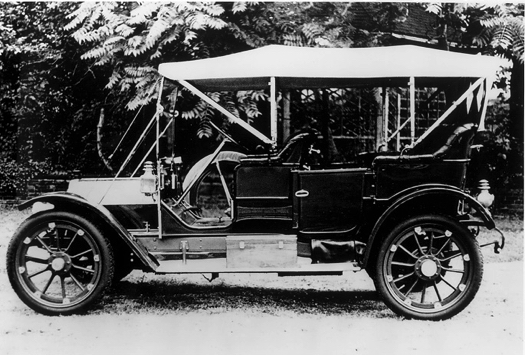A Semi-Irrelevant History Break

The history of chemical leavening is chockablock with characters. Not least among them a fellow by the name of George Rew, a young chemist who in 1889 developed the modern formula for baking powder in cooperation with a fellow named William Wright. Wright was an entrepreneur (a cousin of Orville and Wilbur of Kittyhawk fame), who hired Rew fresh out of the University of Michigan for his Chicago-based enterprise, the Calumet baking powder company. Together the two hit upon a formula that included not only calcium phosphate, but sodium aluminum sulphate as well.
Rew was made vice president of the Calumet company in exchange for his contribution, and eventually became president, though that wasn’t his primary claim to fame. Rather, Rew gained notoriety for setting the land speed record for reaching the West Coast of American by car. It seems that in 1907 he and the rest of his four-man team decided to strike out for the Wild West in their state-of-the-art Stearns tourer (pictured above), hell-bent on adventure. There were no superhighways in those days, in many instances no roads at all. That made life rather difficult for the Stearns, which was designed as a street cruiser, not an ATV. This problem the team overcame by stripping the tires off the car and driving it on its rims along railroad tracks. They drove by day and camped by night, eventually setting a new daylight travel speed record, covering 2,800 miles in a blistering 19 days. It was a landmark achievement at the time, and great publicity for F.B. Stearns and Company.
All that behind him, Rew returned to Chicago to cultivate plants (he was an amateur botanist also). In 1918 he relocated to California, but died a few years later at the age of 55, an extremely wealthy bachelor.